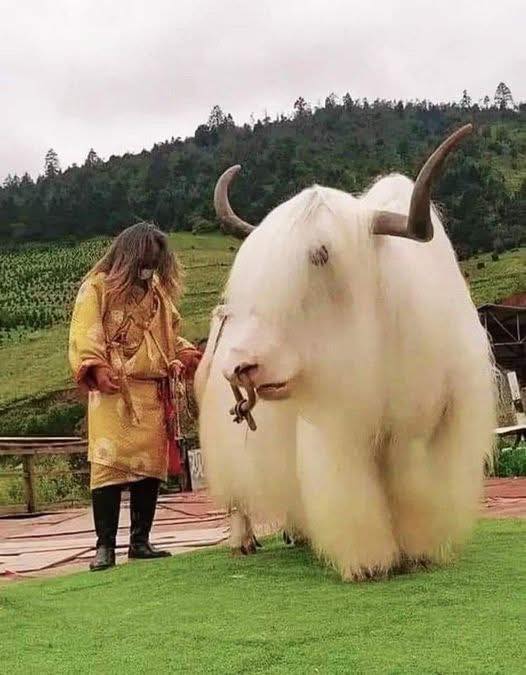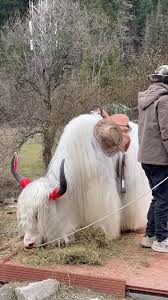The Rare and Sacred Tibetan White Yak

The Rare and Sacred Tibetan White Yak
In the cold, high-altitude regions of the Tibetan Plateau, a rare and majestic creature quietly roams: the Tibetan White Yak. Unlike its darker-colored relatives, the white yak stands out with its pure, snow-like coat, a rare genetic color phase that makes up only about 3% of the global yak population.
This unique breed is most commonly found in Tianzhu Tibetan Autonomous County in China, where the majority of white yaks live. In Tibetan culture, these animals are deeply respected and often considered sacred. Their white fur symbolizes purity, peace, and good fortune, making them an important part of both daily life and spiritual beliefs.
White yaks are essential to survival in the mountains. Their milk, meat, wool, and even dung (used for fuel) support the livelihoods of Tibetan herders. These animals are well-adapted to the harsh conditions of the highlands, surviving at altitudes over 4,000 meters (13,000 feet) with thick fur and powerful endurance.
Due to their rarity, white yaks are a point of pride and cultural identity for Tibetan communities. During traditional festivals, they are honored, decorated, and even paraded to celebrate their beauty and spiritual importance.
However, the white yak faces growing challenges. Climate change, habitat loss, and crossbreeding threaten their numbers. Conservation efforts are now underway to preserve this rare genetic line, with support from local communities, herders, and researchers.
The Tibetan White Yak is more than just an animal — it is a symbol of nature’s resilience, Tibetan tradition, and the quiet strength of mountain life. Its presence reminds us that even in the most remote places, beauty and spirit endure.
Let us cherish and protect this living treasure — the snow-white guardian of the Tibetan mountains.











